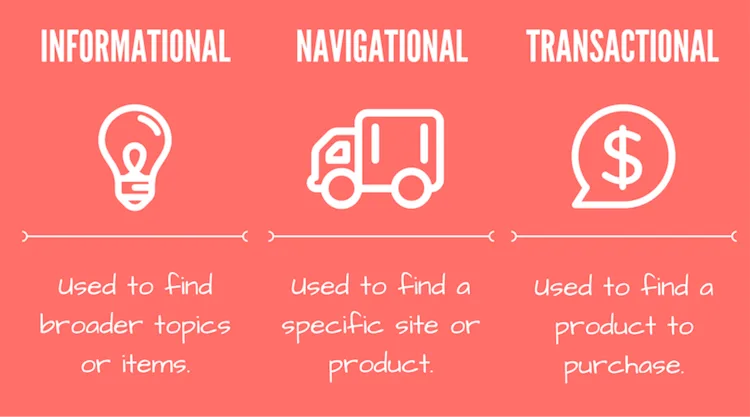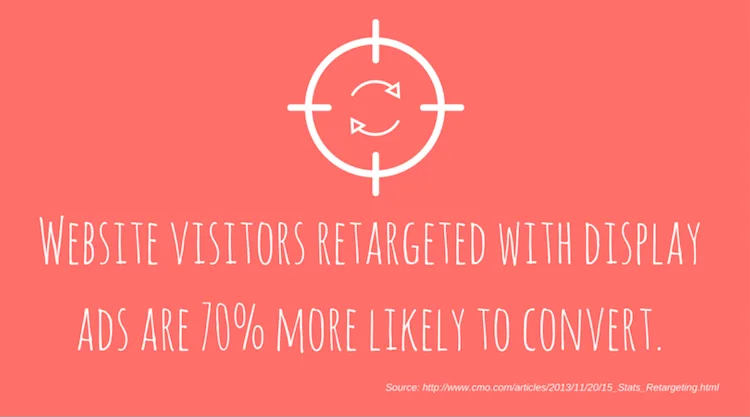How to Reach the Right Audience with Digital Marketing

You can have the most aesthetically appealing online store with easy navigation, the highest quality products backed by top-notch customer service and bottomless pockets when it comes to marketing budget. Yet, none of this matters if you aren’t reaching and engaging the right audience for your brand.
In order to drive the right traffic to your online store and increase sales, you first need to define what a qualified audience is for your brand. You want to determine who they are, what they value and how they use each channel at the various stages of their purchase journey, from interest and validation through to decision and advocacy.
Following are four ways you can identify and engage the right audience with digital marketing.
1. Learn What’s Important to Your Audience

As marketers and business operators, we have near limitless amounts of data at our fingertips. Google Analytics and Search Console can tell us how people find our store and what they do upon arriving. Facebook Insights and Ad Manager can tell us the age, location, relationship status, interests and behaviours of our fans and customers. Social media listening tools can tell us what customers think about our company and products, and what other topics are interesting to them.
Use these tools to unearth insights about your audience’s demographic and psychographic profiles to gain a better understanding of what is most important and interesting. There are multiple tools that easily integrate with the Bigcommerce backend that can help out in this arena. These tools use your store data as well as data from connected accounts (Facebook Power Editor, for instance) and then retarget or push ads out to pull additional clients back to your site.
Here are a few you can try:
Kit: This integration works best if you already have Yotpo installed. When a customer positively reviews your item, Kit will send you a text asking if you want to turn the review into a product ad on Facebook. Social proof or user-generated content (UGC) ads have been proven to increase ad click-through by 300% and reduce both cost per click and cost per acquisition by 50%. Combine this with data regarding your target audience, and the potential returns are monumental.
Sokrati Shops, Facebook Dynamic Product Ads: This integration uses an algorithm to predict potential individual product conversion rate and demand from Facebook users. It then optimises ads using product groupings, tailoring those ads to niche advertising audiences on Facebook. The goal is to increase Facebook advertising ROI for your brand –– with minimal work or upkeep on your part.
Sokrati Shops, Instagram Ads: This integration works similarly to the one above, using an algorithm to determine which products on your site will perform best on Instagram. It also calculates ROI for you, repositioning ads or product groupings based on click-through rate to ensure the most possible traffic is pushed back to your site from the ad.
Retargeting by Yahoo: Only 2% of your visitors will end up buying on their first visit to your online store. Recover the other 98% with this retargeting integration. Reach lost prospects who have left your site and recover lost sales with retargeting display ads. This integration allows you to pre-set fields so professional and dynamic product ads are automatically for your campaign, using your logo and product images and adhering to your brand aesthetic. Read more retargeting campaign tips here.
2. Speak Your Audience’s Language

You’ll never get through to Belieber tween girls if you’re using an extremely formal tone. And you’ll likely ostracise male boomer sports car fanatics with flowery prose and exclamation points. To relate to and connect with your audience, you need to speak their language. That means not only using the appropriate voice and tone, but also peppering in actual words and phrases they use.
Through an extensive ethnographic study for a woman’s apparel brand, our team learned that numerous customers used the term “darling” to describe their clothing products. We began using this term in advertising creative and social media conversations to better connect with their customers and immediately saw an increase in the campaign’s click-through rate.
You don’t need a large-scale and lengthy study like this to uncover these common phrases however. Simply using social media listening tools or manual monitoring of social media conversations can reveal your audience’s common dialect. We often use Tweetdeck and hop on the phone with customers regularly to hear them speak about their business and our product naturally –– and then incorporate that verbiage into specific campaigns.
3. Know Your Organic Keywords
Organic search is typically the largest source of traffic for any website. It’s important to understand not only what terms are bringing folks to your store, but why those terms are being used and what stage those audience members are in. Keywords typically fall into three main categories:

Informational Keywords: Used to find broader topics or items. The user probably doesn’t know what they want or need just yet. They’re still researching. This is your opportunity to be helpful and/or interesting, increasing likelihood that you’ll be considered when they are ready to purchase.
Navigational Keywords: Used to find a specific website or product. For example, they may be searching for your brand name, or a specific product you carry. These users have likely already done their research or know exactly what they want, but may not be ready to purchase just yet. Or, they may be existing customers coming back for a repeat purchase.
Transactional Keywords: Used to find a product to purchase. For example, “buy bicycle tires.” The user is either ready to purchase immediately or well on their way.
By identifying relevant search terms and the user intent behind them, you can develop content to better address your audience’s need. Informational content is often found in blog posts, FAQs, learning centres or resource sections. Navigational and transactional content is found in product category pages and product pages.
You can use tools like Ahrefs or BuzzSumo to do some research on which other sites are currently occupying the leading spots on a search term. These platforms will show you number of linkbacks, publisher, date of publishing and more. Do a bit of research into what your competitors or what the most successful brands out there are doing –– and then recreate it with your own branded tone and style.
4. Stay Top of Mind with Retargeting
When customers reach your store early in their purchase journey — whether they come from an informational keyword search, guest blog post link, display ad or any other means — they’re likely not going to make a purchase that visit. That’s expected and it’s okay. You can remain in the consideration phase and bring those customers back to your store through retargeting efforts.

Source: CMO.com.
Numerous digital channels offer retargeting campaign options. You can use AdWords to run search retargeting, Google Display Network or a DSP, or Facebook for retargeting on desktop and mobile devices. Knowing who your audience is and what channels they use will help you decide what the best channels are for your retargeting initiatives. The list of integrations above is helpful for determining channel ROI from advertising efforts and can be a great starting point in figuring out where retargeting might most make sense for your brand.
Gaining a deep understanding of who your customers are and what motivates them will help you define a more qualified audience. Only then can you use digital channels to reach that audience, and drive higher quality traffic, improve on-site engagement and, most importantly, increase sales.
Have any questions or tips? Share them in the comments below.

Angie Pascale is a partner at Interstellar where she leads search and social, helping brand partners to increase visibility, engage customers and build authority through customer engagement and platform optimization strategies.


